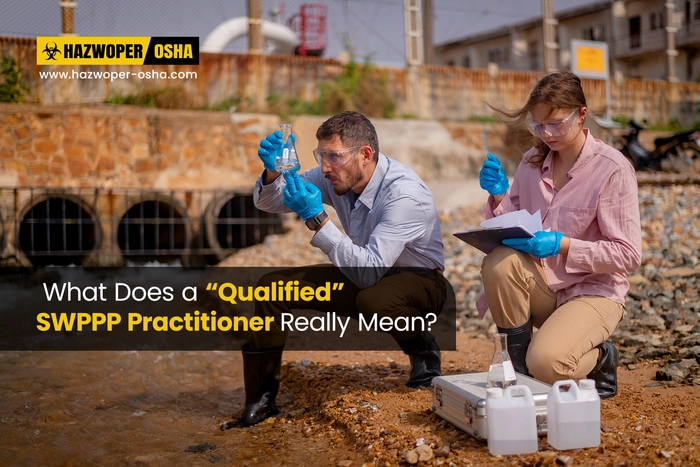Do You Really Know Your 4-Gas Meter?
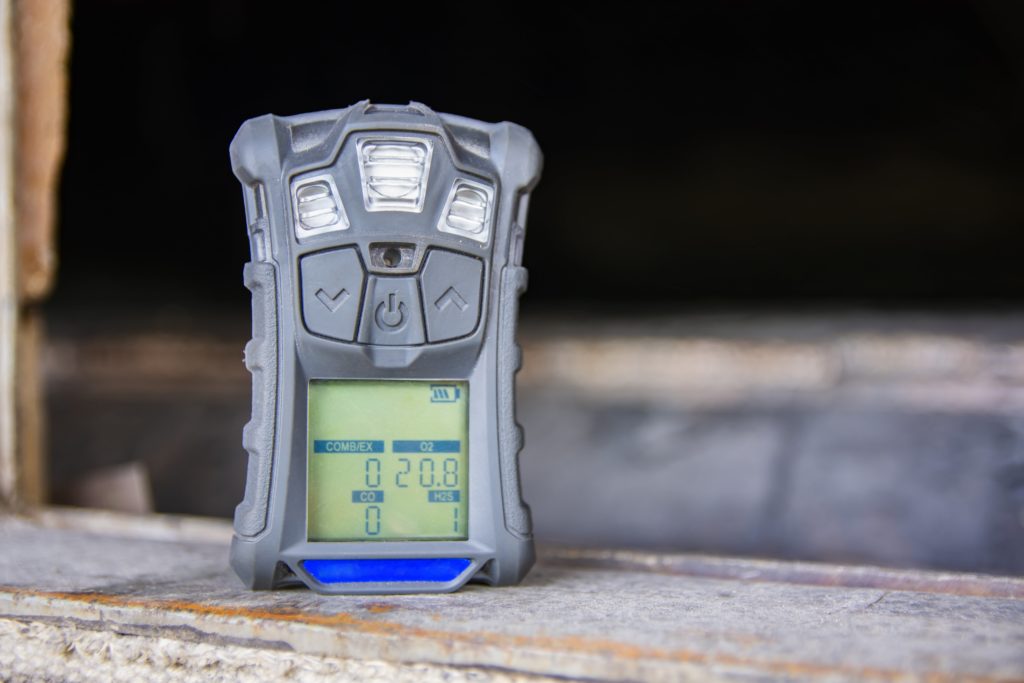
First, I'd like to express that I am writing about 4-gas meters in general and not any specific company meter. Over the years, I’ve consistently found individuals who know very little about their 4-gas meter, other than turning it on and waiting to hear the dummy sensors. I’ve always said, “Don’t wait for the sensors, Dummy.” I’ve seen people blow into the meter tubing as a sort of ‘bump test’; I’ve seen people turn on the meter and calibrate it in the actual hazardous atmosphere in question; I’ve seen people walk through testing areas so fast they don’t allow the meter time to analyze the right areas; I’ve seen people improperly monitor vertical confined spaces by not monitoring all levels and doing it too fast; and people who don’t take into account corrective factors. I’ve also seen people who don’t understand parts per million (PPM) and percentages; I’ve seen meters improperly cared for by leaving them on rigs all day in cold weather and being knocked around; and lastly, but certainly not the least, people who have no idea of their meter’s limitations, of which there are many. Not here, but in my next blog, I will also introduce you to ‘T’ ratings, groups and zones, class and division, and temperature ratings.
Case in point: I was teaching a class on 4-gas meters a few years back to a group of safety managers. Before the class, I asked if someone had a meter that I could borrow for a 10-minute demonstration the next day. One person obliged, and I read the operation manual the night before in preparation. During the presentation I mentioned, for example, “this manual clearly states in bold print on the first page: This meter does not monitor acetylene or hydrogen gas.” I was pretty shocked that this safety manager, whom I borrowed the meter from, did not know this! He told me that’s what he specifically needed the meter for! Consequently, he bought a new meter and did his homework. If you find yourself in a similar position and need dependable equipment, you can explore a range of 4 gas monitor options at PK Safety. The moral of this story—know your potential atmospheres, do your research, and above all; read your manual.
Fast Fact: When you meter a space, ensure you take your time at all levels (low, middle, and high) because of the various vapor densities of the gases that could be present in the space being monitored (see Figure2).
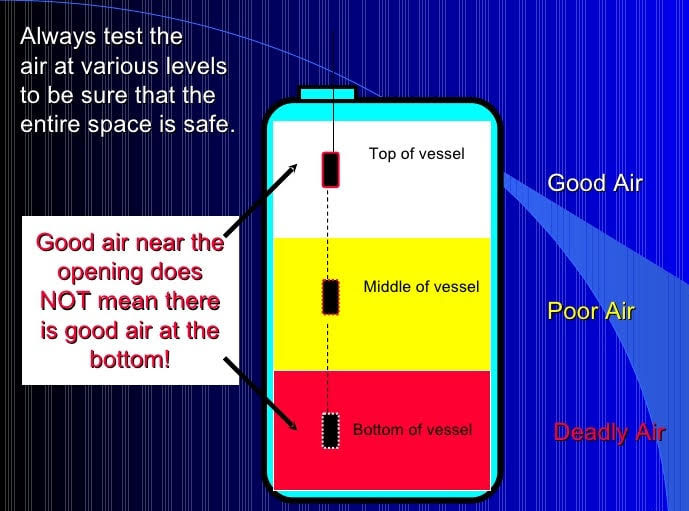
Caring for Your 4 Gas Meter
Let’s start with caring for your meter. Sadly, too often an overlooked and significant detail regarding meters. Some of us like to keep our meters in the outside compartment of a rig all day, in cold weather and unsecured, nor in its case. The meters generally operate at their maximal potential anywhere from 64 0F – 86 0F. Temperatures venturing farther away from this range will make the sensors less reliable. Normal operating temperatures are generally between 14 0F –104 0F. In cold weather environments, this could be an issue. Some meters are drop-tested from 10 feet to 25 feet, that’s fine, but please protect your meter and keep it in its case, secure the case and keep it in relatively ambient temperature inside the cab of your apparatus. If your rig is stored outdoors and exposed to the elements (cold or hot), please bring the meter inside overnight.
Operating Your 4 Gas Meter
Most of us know that a 4-gas meter analyzes four gases: Oxygen (O2), Carbon Monoxide (CO), Hydrogen Sulfide (H2S), and Combustible Gases (LEL) with a hydrocarbon base. Most of us may know that CO and H2S are expressed as parts per million (ppm) on the meter display (the toxic gases), and oxygen and LEL’s are displayed as a percent (%). However, most of us don’t know how to convert ppms to percentages and vice versa. We’ll talk about that in-depth later. The Occupational Safety and Health Administration (OSHA) advises to bump test your meter before each day’s use. The bump test is only a function test to see if the sensors activate and the machine is operating. It does not test for the accuracy of such sensors. That is done through a full calibration test (generally every six months or according to the manufacturer’s recommendation); or if you find an issue with the bump test or come across other operational errors. When you turn your meter on for usage, it will run through a fresh air set-up (FAS); this is not a full calibration. Please perform the FAS in a non-hazardous atmosphere before entering a hazardous atmosphere, otherwise, the bad air will be locked in as a baseline and you won’t be able to detect any appreciable amount of hazardous air. When you're metering an area, it takes 10-15 seconds reflex or response time for the meter to get 90 percent of a final reading. In other words, don’t rush through rooms or concerned areas because you might get a hot reading from the previous room or area up to 50 feet back, or at the previous vertical levels in a hole.
We’re all pretty familiar with low-level and high-level alarms, such as TWA and STEL alarms. However, are you familiar with corrective factors? Today, most meters use a methane base to measure the combustible gas spectrum. Therefore, gases with a hydrocarbon base, other than methane, require multiple factors applied to your Lower Explosive Limit (LEL) reading. Depending on the meter, this can range from approximately 0-5.0.
For example, gasoline has a factor of 1.63. If you get a reading on your meter at the bottom of a trench or basement of 1.0 percent, you must multiply 1.0 x 1.63 = 1.63 percent. Now, there is also a margin of error of +/-.25 percent; 1.63 + .25 = 1.88 percent as a true reading. Presumably doubling the reading from your meter to get your actual gasoline reading.
I always told my firefighters to double the reading in their heads if they did not know the immediate corrective factor. Why is this important? Well, the flammable range of gasoline is 1.4-7.6 percent; without the applied corrective factor above, our reading would indicate that you are below the flammable range; when in fact, you are well into the flammable range (see Figure 3).
A better example is xylene. Xylene has a factor of 4.83. Imagine the discrepancy and danger with a flammable range between 0.9 to 7.0 percent! A reading of 0.5 percent would actually be over 3 percent, showing a very explosive atmosphere.
So, it is imperative to keep your corrective factors in mind. Meters have differing corrective factors. They also have some sensor cross-sensitivities with other gases. Read Your Manual. By the way, when you actually reach the LEL, the meters generally display ‘XXX’, ‘100’, or ‘OVER’, etc.
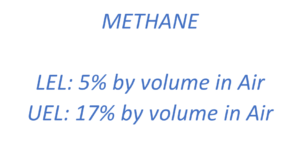 Fast Fact: Did you realize that when you add a probing tubing or a wand to your meter you should allow for a one-second per foot lag for the gas to get to the meter and an additional 10-15 seconds, minimally, to get an evaluation? Well, now you know!
Fast Fact: Did you realize that when you add a probing tubing or a wand to your meter you should allow for a one-second per foot lag for the gas to get to the meter and an additional 10-15 seconds, minimally, to get an evaluation? Well, now you know!
Visual example to show where on the scale percentage of LEL is measured. Additionally, some meters will only guarantee flammable liquid readings with flashpoints up to 100.4 0F. Anything above that point result will get lower LEL readings, as the sensor will start to drift. Furthermore, oxygen sensor drift happens due to atmospheric elements of air pressure, temperature, and humidity. Humidity above 90 percent alone can change the oxygen reading by .5 percent. Once the oxygen sensor drifts, the entire meter becomes less reliable, more often than not sensing low readings. Corrosive gases also tend to damage the sensors. Consequently, work diligently in these atmospheres. It would be a good idea to have the meter inspected, bump-tested, and calibrated, if necessary, after such exposure.
Other Limitations to Watch Out for When Utilizing Meters
- Don’t use them in oxygen-deficient or enriched atmospheres (<10% or > 25%),
- Don’t use them in inert environments,
- Don’t use them in mist or dust atmospheres, and
- Remember, flashpoints > 100.4 0F may result in low readings.
When do Sensors Become Desensitized During the Analyzing Stage?
When atmospheres are contaminated with:
- Organic silicones,
- Silicates,
- Lead-containing compounds, or
- Hydrogen Sulfide >200 ppm or >50 ppm for 1 minute.
Oxygen Displacement
Remember earlier I mentioned converting parts per million (ppm) to percentages? Let’s discuss it now.
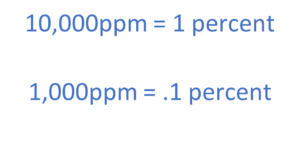
The normal O2 reading on a 4-gas meter is 20.9 percent. We know the oxygen sensor goes into low-level alarm at the 19.5 percent reading. Suppose you're in a confined space and that oxygen reading drops to 19.6% and you are unaware of it because you only listen for the dummy sensors to alert you. Hopefully, you will still be alive if this happens. WHY? Because 13,000 ppm of oxygen has been displaced and you don’t know by what? We know it couldn’t be CO, LEL, or hydrogen sulfide; or the alarms would have alerted you. Something else is with you! As an analogy, CO will kill you at 10,000 ppm or 1% percent in the air in 1-2 minutes. We have 13,000 ppm!!! Scary part (arguably)! Multiply that by 5x’s because you're extrapolating the 20.9 percent oxygen portion of air. 13,000 X 5 = 65,000 ppm. I say arguably because I’ve talked to industrial hygienists with opposing thoughts on the 5x’s. Regardless, a frightening scenario. This is why I always tell my people to eyeball the meter every 5 minutes.
In Closing…
Finally, I hope I’ve enlightened you to most of the significant limitations of your meters, although not inclusive. Proper care and usage are of utmost importance. Equally significant is recognizing the potential atmospheres you may encounter. Doing your homework on the right meter to purchase for your business goes without saying. You can find this information in my next blog.
Remember: Read your manual and know your meter! “Don’t wait for the sensors, Dummy.”
If you are interested in gas meters, then I assume you may be interested in our catalog of online courses dealing with gas meters. Some of our courses, such as Confined Space Training; Competent Person for Excavation, Trenching, and Shoring; and the HAZWOPER series of courses give comprehensive information on testing atmospheres for hazardous gases.
Stay safe everybody!
Stay tuned for my next Blog: Choosing the Right Gas-Meter for You!
Michael J. Conroy, Retired Battalion Chief/Paramedic, Chicago Fire Dept. with 36 years of experience, is also a Certified Safety Professional (CSP) and Construction Health & Safety Technician (CHST). Mike is also an OSHA-Authorized Trainer and a certified Fire Dept. Safety Officer. Mike has vast experience and holds advanced certifications in confined space, fall protection, rigging, excavation rescue, and all the hazardous material disciplines, among many other certifications in the safety field. Mike will continue to write and speak on safety topics and share his years of safety experience through this media.

 EN |
EN |  ES
ES





























































































































